Soft Future
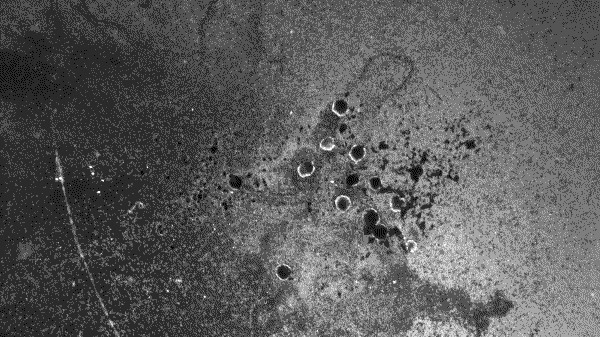
Xenobots. Source: Popular Science. Credit: Douglas Blackiston and Sam Kriegman.
In 1747, not long after steam-powered mechanical technologies had begun revolutionizing the known world, Julien Offray de La Mettrie wrote L’Homme Machine (Man a Machine), a treatise elaborating the idea that the human body is an extremely complex mechanical assemblage.1 Almost two centuries later, in 1972, at the turn of a new cybernetic age, biologist Efim Liberman wrote “The Cell as a Molecular Computer,” a paper that presents the idea that life is a system of information storage and processing.2 Throughout history, our understandings of technology have acted as a blueprint for conceptualizing the human and the living. This dynamism carries profound implications for how we relate to each other and to the larger world around us.
Our idea of what counts as “technology” is also the product of perspective. Providing a general definition of technological artifacts outside their material, cultural, and historical context is therefore difficult and probably pointless: different circumstances result in different dominant paradigms and ideas of what “technology” means. Yuk Hui has proposed the “ecology of technology” as a way to critique monocultural and universalist visions of technological progress.3 Furthermore, technologies aren’t just shaped by their human cultural context, but are cultural and material agents in their own right. Approaching technology as an ecological phenomenon requires us to think of technological artifacts not as passive byproducts of human ingenuity, but as capable of autonomous evolution, forming stratified and nonlinear relations with their human companions. Much like natural ecosystems, technological ecosystems thrive on complexity and diversity.
The idea of an “ecology of technology” might sound contradictory in an age when the rise of global, resource-hungry, extractivist infrastructures (what Peter Haff terms the “technosphere”) seems to be invariably leading us toward ecological collapse.4 Yet, this dystopian vision rests on a reductionist understanding of what technology could be—and, at least in part, already is. Many contemporary technologies are beginning to escape the narrow boundaries of the paradigms that preceded them. Something unexpected, and unprecedented after the industrial revolution, is taking place today: our technologies are becoming softer.
Everybody knows intuitively what softness feels like, but it is surprisingly hard to define. Softness tends to be an experience more than an inherent property of things, one that emerges from an encounter between two bodies. We can only say something is soft after interacting with it, touching it, and transforming it. A soft piece of clay is indistinguishable from a dry, hard one until we press our hand into its surface and feel how it responds to the pressure of our fingertips. The phenomenology of softness results from a combination of fluidity and plasticity. Fluidity is the process by which materials change their structure through time and space, continuously deconstructing and reconstructing their boundaries. Plasticity, in turn, is the process by which materials retain information from the world around them, like how a glass indefinitely preserves the shape into which it was molded. Softness, a combination of fluidity and plasticity, allows bodies to yield to the world while continuously learning from it.
Emerging soft technologies are often based on biological, renewable, and degradable materials, and share an unprecedented ability to work in synergy with spontaneous processes of self-organization and regeneration. In contrast with a view of technology that sees it as merely exploitative of nature—depleting resources, and energy to function— softness opens the possibility of a new synergy between the synthetic and the natural.
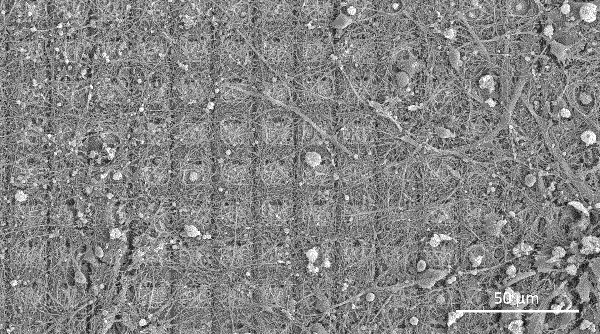
Neuron biocomputer. Source: New Atlas. Credit: Cortical Labs.
Soft Histories
We might be tempted to believe that softness is an inherent property of specific materials. However, hardness and softness are more attributes of a human disposition toward certain materials than fixed physical states. All matter is, to some extent and on certain scales, soft. Wood, which has been used as a hard material for millennia—by cutting it, shaping it, and assembling it into artifacts—is also a radically soft one. In the Meghalaya region of India, for instance, indigenous populations construct living wood bridges by interlacing the aerial roots of ficus trees. These bridges grow over time, regenerating and healing themselves. Even rock, the epitome of hard materials, is soft—just not at the scales that humans experience. Over the span of millennia, minerals grow into crystals, rocks erode into sand, and strata fold under the pressure of tectonic movements.
Western culture’s relationship to softness has been an ambivalent one. We have learned to reject softness as a mark of weakness and to celebrate hardness as a sign of strength. As Luce Irigaray has passionately argued, this cultural rejection of softness is both a physical and metaphysical matter: hardness has allowed us, practically and philosophically, to exert control over the fundamental unpredictability of bodies.5 While soft materials escape strict boundaries and reject static representation, hard bodies are unchanging: their identity is fixed, and their boundaries are never questioned. Our cultural bias against softness is evident in how we conceptualize the past, focusing exclusively on the significance of hard materials, like stone and metals, in constructing our shared human identity. Yet, soft materials have been paramount in human cultures’ development. Anthropologist Elizabeth Wayland Barber emphasizes the importance of textiles in the evolution of early human communities, highlighting the masculinist biases that have led to many overlooking its significance.6 Archaeologist Linda Hurcombe, in turn, coined the term “missing majority” to refer to those soft, organic, perishable artifacts that were fundamental to the culture of prehistoric human groups but have been largely destroyed or forgotten.7
Although its story is seldom told, an ancient softness is still embedded in many of humanity’s most transformative technologies. In Mesopotamia, the birth and widespread development of writing was first made possible by the fluidity and plasticity of clay, an abundant material resource in the alluvial plain between the Tigris and Euphrates rivers. Some have speculated that architecture, too, is founded on the forgotten legacy of soft materials. In his writings on the origins of architecture, Gottfried Semper proposes that the architectural forms and motifs that have evolved throughout history are rooted in the softness of our ancestral homes. Pliable fabric and thread, not hard stone or brick, were the first materials to protect us from the outside world and to shape our early environments.8 Soft materials also lie at the heart of today’s digital technologies: the Jacquard loom inspired Ada Lovelace’s first computer prototype. As Sadie Plant articulates, “the yarn is neither metaphorical nor literal, but quite simply material, a gathering of threads which twist and turn through the history of computing, technology, the sciences and arts.”9
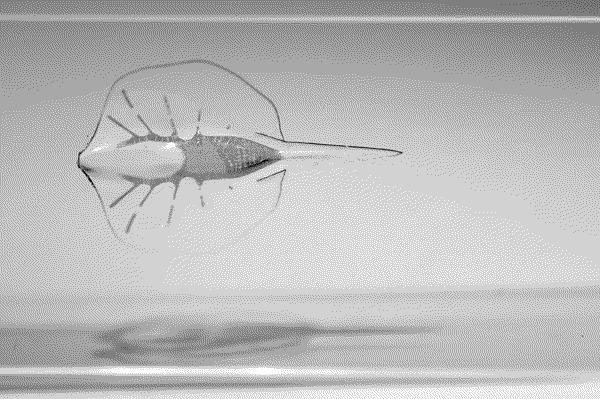
Biohybrid robot. Source: The Conversation. Credit: Karaghen Hudson and Michael Rosnach, CC BY-ND.
Soft Technologies
Softness is not only a fundamental part of our past; it is also an essential part of our future. Over the past decade, natural and synthetic soft materials have become increasingly significant in emerging technologies, dismantling the narrow view that equates technology with mechanical, nut-and-bolt machines. Rather than relying on rigid assemblies of hard components, soft technologies integrate materials that can perceive and respond to their environment in adaptive ways. Take robots, for instance. Robots embody the archetype of autonomous machines and our broader technological culture is revealed through how we imagine and construct them. Throughout the twentieth century, robots have been envisioned as quasi-anthropomorphic electromechanical constructs, but today this image is shifting. Soft robots are crafted from flexible and deformable materials and don’t require joints, actuators, or other electromechanical components; non-human, invertebrate organisms often inspire their bodies’ shapes and movements. The Octobot, an octopus-like robot printed from flexible silicone, is the first fully soft robot: devoid of the hard mechanics of its predecessors, its movements result from a chemical reaction between two liquids. The Octobot is still a primitive embodiment of what soft technologies could become—its behaviors are pre-programmed and its body insensitive to the world around it. Yet, innovative soft materials are proving their capacity to sense and adapt, becoming attuned to light, electrical fields, shifts in temperature, and the presence of chemicals around them. 10
All living organisms are soft. We humans are water-based, self-organizing bodies capable of perception and learning. To be soft also means to be open to new encounters: to not have a fixed boundary, but a porous and negotiable one. The softness of the living is embodied in our capacity to form new relations across the thresholds of skin, cell membrane, and genetic heritage. Lynn Margulis has proved that symbiosis—the living together of unlike organisms—is one of the main drivers of evolution.11 Symbiotic encounters can occur not just within the realm of the living, but also between nature and technology. Scientist John Greenman has proposed the term SymBot (an abbreviation of “symbiotic robot”) to refer to technologies whose functioning depends on the cooperation between artificial and living components. SymBots represent “the beneficial integration between a live part and a mechatronic part, embodied in a robotic platform. A SymBot is therefore a robot that can potentially demonstrate artificial symbiosis, which is a proto-cooperative association between two entities.” 12
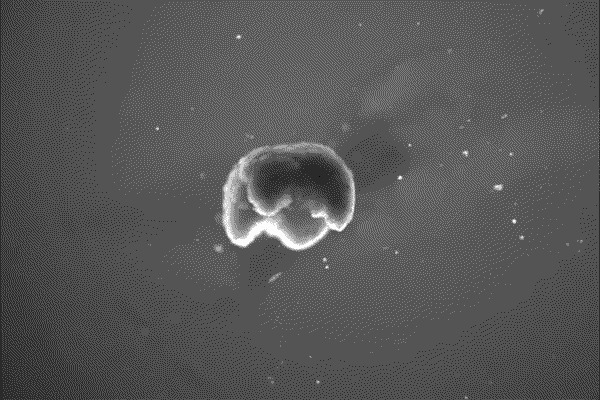
Xenobots. Source: Technology Review. Credit: Douglas Blackiston and Sam Kriegman.
Expanding Margulis’s vision of evolution by symbiogenesis, SymBots manifest a speculative future when synthetic and living materials will have co-evolved into a diversity of hybrid organisms. Researchers have already started integrating living components into larger technological artifacts, creating an unprecedented level of intimacy between living and synthetic matter. This new symbiotic relationship is branching out in multiple directions. Biohybrid robots, for instance, combine water-based synthetic materials, known as hydrogels, with living tissue. Animal heart muscle cells can grow to produce tissue that beats synchronously and autonomously, providing the energy to propel the robot forward. The symbiosis of life and technology can also result from an entanglement of computation with biological matter. Xenobots are microscopic synthetic organisms, assembled from frog skin and heart cells, whose structure evolves in silico with the aid of artificial intelligence. Xenobots can swim, carry small objects, and, under appropriate circumstances, even build small copies of themselves.13 These organisms’ capacity for autonomous behavior demonstrates that cells and computers, organisms and technologies, can self-organize and cooperate in forms that far exceed natural genetic “programming.”
Softness entertains a profound, still largely unexplored, relationship with sentience and cognition. As we feel the softness of a piece of clay on our skin, the clay “feels” us in return—although not in the anthropomorphic, neurological sense we typically attribute to this word. It is a different, more primitive, unconscious yet fundamental kind of “feeling”: the capacity to be affected by an encounter with the world. This capacity for perception and adaptation holds strong implications for developing sentient technologies. Neurobiologist W. Tecumseh Fitch has introduced the concept of “nano-intentionality” to suggest that all intelligence, natural or artificial, must emerge from adaptable material components capable of perception and memory.14 According to Fitch, the lack of nano-intentionality is why our technologies still don’t possess true cognition. “A crucial difference between a cell and a transistor on a silicon chip,” he argues, “is that the former arrangement of matter can autonomously and adaptively modify itself in response to its circumstances, whereas the latter cannot.” Any sentient AI should thus be based on nano-intentionality, which can only emerge from soft material substrates, capable of both transformation and memory.
A recent step toward nano-intentionality in artificial intelligence is the evolution of “wetware”: an emergent technology in which living neurons, instead of silicon chips, are used as computing substrates. Although still in their infancy, these biological computing systems can already be trained to play simple video games, by providing real-time electrical or chemical feedback on their neural activity. Compared to standard, silicon-based computers, wetware computers are, at least in theory, exponentially more capable of storing, processing, and accessing information with minimal energy expenditure. Beyond offering a more sustainable approach to computing, wetware demonstrates that computation does not have to be limited to silicon hardware: softer material substrates could expand and enrich the definition of “artificial intelligence” itself.
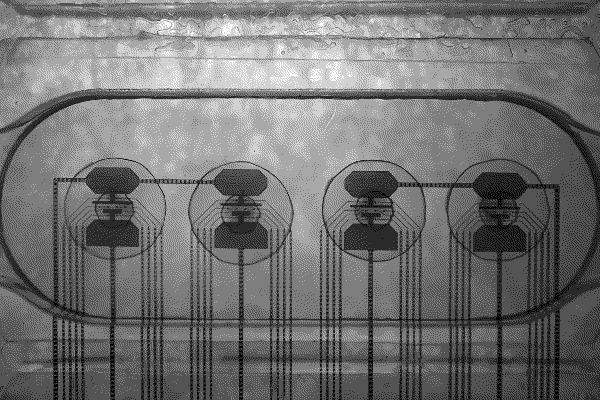
Brain organoid biocomputer. Source: New Atlas. Credit: Final Spark.
Soft Natures
While the development of soft technologies and the pursuit of an "ecology of technology" both depend on a sustainable and symbiotic future, this need stands in contrast to the reality of today’s global technological infrastructures. Peter Haff argues that the technosphere, itself a large-scale autonomous technological system, grows by appropriating massive flows of energy and resources from its environment, disregarding the survival of anything, human or nonhuman, that surrounds it.15 While the rise of global, exploitative technological infrastructures is concerning, to look at technology solely as a resource-hungry parasite aiming to grow at the expense of everything that surrounds it is a disempowering and reductionist narrative, one that ignores both our agency in shaping our technological future and technology’s capacity to defy our all too human expectations. In truth, there is much we do not know about the future of technology. Its evolution does not comply with the linear narratives of progress we humans tend to project upon it.
Evolutionary biology has shown us that the tree of life isn’t a tree at all, but a system of roots branching in multiple directions. Like its biological counterpart, technological evolution is not a vertical, monodirectional story, but a meandering process, often unpredictable and contingent, resulting in diversity and divergence. The non-deterministic nature of technological evolution is, similarly to biological evolution, tied to its softness: its capacity to be transformed by the world, to learn from it, and to associate with other organisms by forming new, symbiotic wholes. Understanding and practicing softness will also help heal our relationship with technology, and, in turn, technology’s relationship with the world. “An ecology of technology,” James Bridle writes, “is concerned with the interrelationships between technology and the world, its meaning and materiality, its impact and uses, beyond the everyday, deterministic fact of its own existence.”16
Softness is a way of articulating how technological artifacts, much like biological organisms, differentiate in niches and drift in forms that are always open-ended and non-deterministic. Rather than evolving in opposition to nature, or merely appropriating natural resources, soft technologies are capable of expanding the possibilities of the natural in new directions. They are, in the words of Luciana Parisi, neither natural nor artificial, but hypernatural. “These machines,” Parisi writes, “emerge from an immanent plane of nature—hypernature—as the composition of free intensities, molecular populations of flows that are autonomous yet coexistent with the processes of organization of matter.”17 Witnessing this hypernatural becoming should remind us to always be wary of neo-Darwinist narratives that place dominance and resource appropriation at the heart of all complex evolution. In technology, like in biology, it is often symbiosis, not competition, that drives the emergence of the new.
Our vision of the human and our vision of technology have always reflected one another. How we imagine technological objects often mirrors our understanding of who we are, or of what we wish to become. The early development of mechanical technologies allowed for a simultaneous mechanization of our view of life, aligning with the needs of a dawning industrial age. When the rise of cybernetics brought the significance of information to the forefront of new technologies, biologists began identifying the genetic “code” with the most essential part of the organism, understanding all biological processes as information-driven. As our paradigms for understanding technology grow softer, our visions of ourselves do too. Fluidity and plasticity are becoming increasingly important concepts in scientific and social discourse about human identity. Genetic reductionism—the idea that our biological destiny is determined solely by DNA—is now regarded as a gross oversimplification of the complex relationship between our bodies, our heritage, and the environment. Our understanding of cognition is likewise softening: the study of neuroplasticity indicates that the brain is capable of structurally reorganizing itself in response to its surroundings. And gender and sex are only further being revealed as complex, nonbinary phenomena through the knowledge that relatively small quantities of synthetic hormones are sufficient to override chromosomal “programming.”
In and beyond technology, softness confronts us with the need to reevaluate the meaning of agency and control. This is both an epistemic challenge and a political question. How can we encourage and foster multi-scale complexity? How do we design systems that are both self-sustaining and open to the outside world? What is the place of local, small-scale intentionality within a broader collective intelligence? Relying on fluidity, plasticity, self-organization, and decentralization, the paradigm of softness reveals governance as a stratified and multi-scalar phenomenon. In political spaces like cities, an overemphasis on top-down decision-making often stifles the microscale and distributed agency of human and non-human communities. In a “hard” city, sustainability depends on large-scale, vertical interventions, while in a “soft” city stratified and self-organized structures introduce the possibility of distributed micro-sustainability—from low-tech urban gardens to high-tech biohybrid materials. As technologies co-evolve with their human companions, different technological paradigms can also encourage new forms of governance. While hard, centralized infrastructure demands rigid hierarchies of managers and controllers, soft technologies thrive under networks of growers, healers, and caretakers. Rather than dictating outcomes or blindly following instructions, these actors cultivate conditions for emergence and resilience.
In technology, biology, and society, we are approaching a “soft turn.” We no longer understand life as a mere mechanical assemblage, nor as an efficient, logical system for the management of energy and matter flows. Instead, we see ourselves as complex and stratified material structures, fluid and plastic, open and in constant flux, whose survival depends on encounters between vastly different worlds.
Footnotes
- Julien Offray de la Mettrie, Man a Machine (Open Court, 1912), https://archive.org/details/manmachine0000lame/page/n7/mode/2up
- Efim Liberman, “Cell as a molecular computer (MCC),” Biofizika 17, no. 5 (1972): 932-943. For an overview of Liberman’s scientific work, see also S.V. Minina and N.E. Shklovskiy-Kordi, “Neuron quantum computers and a way to unification of science: A compendium of Efim Liberman’s scientific work,” BioSystems 217 (July 2022) 104684.
- Yuk Hui, “Machine and Ecology,” in Cybernetics for the 21st Century, Vol. I: Epistemological Reconstruction, ed. Yuk Hui (Hanart Press, 2024).
- Peter Haff, “Technology as a geological phenomenon: Implications for human well-being,” in A Stratigraphical Basis for the Anthropocene, ed. C. N. Waters et al., (Geological Society, London, 2013).
- Softness and fluidity are recurring themes in Luce Irigaray’s writings. For an overview of this topic, see Hanneke Canters and Grace M. Jantzen, Forever Fluid: A Reading of Luce Irigaray’s Elemental Passions (Manchester University Press, 2005).
- Elizabeth Wayland Barber, Women’s Work: The First 20,000 Years (W. W. Norton & Company, 1996).
- Linda Hurcombe, Archaeological Artefacts as Material Culture (Routledge, 2007).
- Gottfried Semper, The Four Elements of Architecture and Other Writings (Cambridge University Press, 1989).
- Sadie Plant, Zeros + Ones: Digital Women and the New Technoculture (Fourth Estate, 1998).
- See Laura Tripaldi, Parallel Minds: Discovering the Intelligence of Materials (Urbanomic, 2022).
- For an overview of the theory of symbiogenesis and its implications for science andecology, see Lynn Margulis, Symbiotic Planet. A New Look at Evolution (Basic Books, 1999).
- Ioannis A. Ieropoulos et al., “Energy and Metabolism,” in Living Machines. A Handbook of Research in Biomimetics and Biohybrid Systems, eds. Tony J. Prescott and Nathan Lepora (Oxford University Press, 2018), 62.
- See Philip Ball, “What on Earth Is a Xenobot?,” Aeon, August 30, 2022, https://aeon.co/essays/how-xenobots-reshape-our-understanding-of-genetics
- W. Tecumseh Fitch, “Nano-intentionality: A Defense of Intrinsic Intentionality,” Biology & Philosophy 23 (2008):157–177.
- Haff, “Technology as a geological phenomenon.”
- James Bridle, Ways of Being: Animals, Plants Machines: The Search for a Planetary Intelligence, (Penguin, 2022).
- Luciana Parisi, Abstract Sex. Philosophy, Bio-Technology, and the Mutations of Desire (Continuum, 2004), 36.